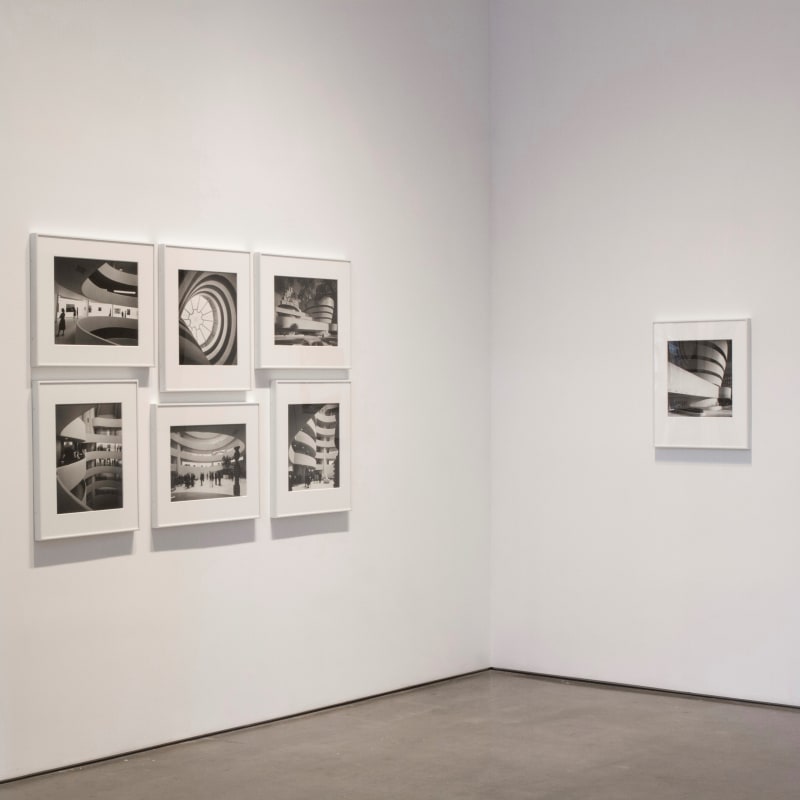In celebration of architect, Frank Lloyd Wright's 150th birthday, the Yossi Milo Gallery is displaying Ezra Stoller's photographs of Wright's buildings. Stoller, a phenomenal American photographer, highlights some of Wright's greatest works including the Guggenheim Museum, Fallingwater, the Marin County Civic Center, and the SC Johnson Research Tower. This exhibit features twenty gelatin silver prints, all of which reflect Wright's refined sense of texture, lines, color, shape and viewpoint.
Stoller met Wright in 1945, after photographing Wright's Taliesin in Spring Green, Wisconsin and Taliesin West in Scottsdale, Arizona. Wright took a liking to the way Stoller captured the "defined perceptions" of his post-war modern architecture. There were times when Stoller struggled to capture the essence of Wright's modern architecture versus the conventional buildings he was used to shooting. These were the types of skyscrapers known by people throughout the nation, but Wright's buildings in accordance with Stoller's photographs, took the country by storm.
Stoller had the ability to show the public what these buildings really stood for-- the transition to a new day. He was willing, he was able and he knew how to approach each building of Wright's that he was asked to photograph. He shot the Marin County Civic Center from the inside of an atrium that looks out onto a view of the rolling hills in San Rafael, California. Because he positioned himself behind the arch way, you are given a sense of the building's relationship to its setting.
In this exhibit, Stoller's photos, according to architecture critic, Paul Goldberger "played a major role in shaping the public's perception of what modern architecture is about." Stoller took a much different approach than most artists when it came to photographing Wright's work. He made sure to parallel Wright's desire for the public to view these structures as the architectural treasures they were and still are.
Not every building of Wright's was easy to photograph for Stoller, specifically, the Johnson Wax Tower. Due to its height and many windows, the 15-story skyscraper wrapped in red brick and glass tubes, was a functional flop. Tubes throughout the building leaked badly after the tower opened in 1950 so it was only used for a short period of time. Stoller still wanted to capture the eerie of essence of this building but in order to do so, he shot the photo in backlight at the break of dawn. It was choices like these that really helped to distinguish Stoller among the other artists who photographed Wright's buildings.
His keen eye for detail and ability to recognize the best time to shoot, makes these photographs untouchable. Wright believed Stoller did the best job of documenting these buildings the way he wanted them to be seen, experienced and then remembered. Wright's architectural masterpieces that put up across the country would not have come as such a shock to the nation if Stoller's photographs had not been taken. Stoller worked closely with Wright to match his feelings regarding the buildings he so carefully constructed. At the Yossi Milo Gallery, Ezra Stoller Photographs Frank Lloyd Wright Architecture will be on display from June 29 to August 25, 2017.

